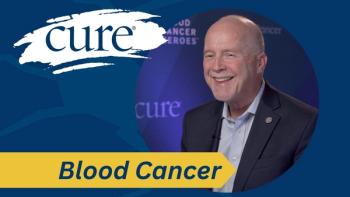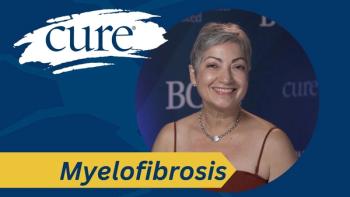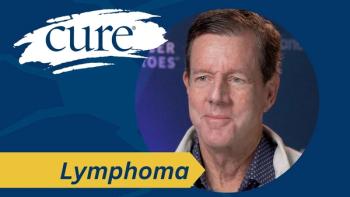
Recognizing Psychological Distress After Cancer
After going through cancer, I better recognize my triggers for heightened anxiety.
I had been
In December 2019, I suffered strangely from a cold that would not go away. I shared this concern with my oncologist at a routine blood work checkup in early 2020. He compassionately informed me that my leukemia was back. I’m not sure if the cancer was related to my persistent cold, but since then, colds scare the heck out of me.
After an analogous bone marrow transplant from a beautiful young donor in Israel, I recovered.
Recently, two years after the transplant, a cold surfaced at the exact same month as the last god-awful spell. I thought my cold that started early December 2022 was on the way out. It had been with me for two weeks already. The following morning, my gravelly voice sunk to a lower register, and the tissue box sat propped in the crook of the arm. I couldn’t hack up phlegm in my chest. The dry cough began to hurt my ribs. Another week went by, but the cold remained. I took a home COVID-19 test that came up negative. Yet another week went by without relief.
I started to panic. I wondered if I had cancer again. I’m very good at jump-thinking.
I shared my fears with my siblings. As anticipated, they encouraged me to “be positive.” “Don’t you want to go see a doctor just to assuage your concerns?”
I silently replied that medical professionals might confirm my fear that I had cancer again and tell me to disrobe and slip into that flimsy hospital gown with the snaps.
The cold went away. I was embarrassed by my heightened anxiety.
Looking back, I believe my worrying was somewhat warranted. However, not wanting to get it checked out by a physician was a sign of emotional distress.
I recognize that many with a cancer diagnosis face fears post recovery. My fear was incredibly itty-bitty compared to others who experienced trauma in their lives. However, after in-depth reading, I learned that it is imperative for patients and survivors and even caregivers to seek help should they experience mental health challenges following treatment.
Some survivors even experience post-traumatic stress disorder. “The Diagnostic Statistical Manual of Mental Disorders (updated in DSM-IV and now in DSM-V) includes the diagnosis and treatment of a life-threatening illness, such as cancer, as a traumatic stressor that can result in post-traumatic stress disorder (PTSD).”
As expected, my therapist confirmed that I do not have PTSD, but at the same time, I should be aware of triggers and process the feelings that may arise.
I learned that many patients do not get help for emotional distress or PTSD. Society sees sadness and anxiety as normal for patients and survivors. A sufferer may feel shame when a support system discourages “overreactions.” Empathy and guidance towards professional help may open a path to recovery. Without help, patients can put themselves at risk.
I read a 2017 study that said, “Within cancer, the avoidant behaviors of PTSD may exhibit themselves as missed appointments, failing to complete treatment or withdrawing from friends to avoid speaking about the cancer. Increased psychological distress is further correlated with decreased radiation treatment compliance and overall survival.”
So, processing fear is important. I was really interested in learning that some cancer patients worry that their fear may adversely affect their immune system. However, according to a study, processing fear can be helpful. “…feeling sad or fearful during adaptation or anticipatory grief is common. Whilst processing these emotions is difficult, they are transitory and lead to a stronger emotional position. Suppressing these emotions may increase the risk of depression, reduce authentic communication and lead to sleep difficulties. The question of how mood and anxiety disorders adversely impact outcome is controversial; the greatest evidence for the likely mechanism is reduced treatment compliance and less adherence to a healthy lifestyle.”
Bone marrow transplant patients and PTSD
The National Cancer Institute reported that PTSD was more likely for bone marrow transplant recipients, ranging from 5% to 35% in different studies.Moreover, the greater amount of time that goes by post-transplant, the greater the likelihood of PTSD! That’s interesting.
As a two-time acute myeloid leukemia survivor who underwent a bone marrow transplant with a history of addiction, depression and anxiety, I feel it is important to continue professional help and medication management.
As a recovering alcoholic, I am well aware that suppressing emotions may increase the risk of misery and unhealthy behaviors. I lived through a devilish depression that led to a relapse after 20 years of sobriety. Picking up alcohol was my effort at curing myself, but I fell into emotional and physical hell. Finally, I received professional help, made some life changes and took prescribed medication that worked!
Possibly forever? That is fine by me!
A Few of My Own Triggers:
- Colds
- Aging
- As time goes by post-transplant, I am afraid that the leukemia recurrence is just around the corner.
- I feel I am aging faster than others. All the chemotherapy gave me osteoporosis, and my neck and back are crackling all day. I’m constantly circling and contorting my head, listening to the pops and cracks – very much like playing with bubble wrap. I wonder if my vertebrae will need to one day be fused, and if the procedure will lead to cancer. (Again, this is the kind of jump-thinking that I’m very good at.)
- Memory lapses are small and infrequent, but my father just passed away from Alzheimer’s. If I forget something, I can picture myself becoming a cancer patient with dementia.This is terrifying, but as my therapist encourages me: “Don’t worry about something that hasn’t happened.” Easier said than done.
- Routine checkups with my oncologist to see if my cancer remains absent.
Not a trigger: the hospital! I am actually nostalgic for 4 North in the center! It’s weird, I know. This is accredited to the compassion and nurturing of the Moffitt Cancer Center bone marrow transplant team and my family’s love. I felt safe. With that being said, I am not longing to go back; I just have memories that protect me from being triggered from the sight of the center.
Get this, as of 2020, no specific therapies for treating PTSD in cancer patients have been developed! However, modalities that are used with other PTSD patients has proven helpful. Some of these therapies include crisis intervention, cognitive therapy, support groupsand psychopharmacology.
We shouldn’t miss appointments, discontinue treatment, turn to substances like drugs or alcohol for comfort, be perpetually irascible, avoid people, or feel lonely and depressed. I wish for peace for all who experience cancer.
These days I’m excited to wake up. And I feel privileged to be aging.
For more news on cancer updates, research and education, don’t forget to




